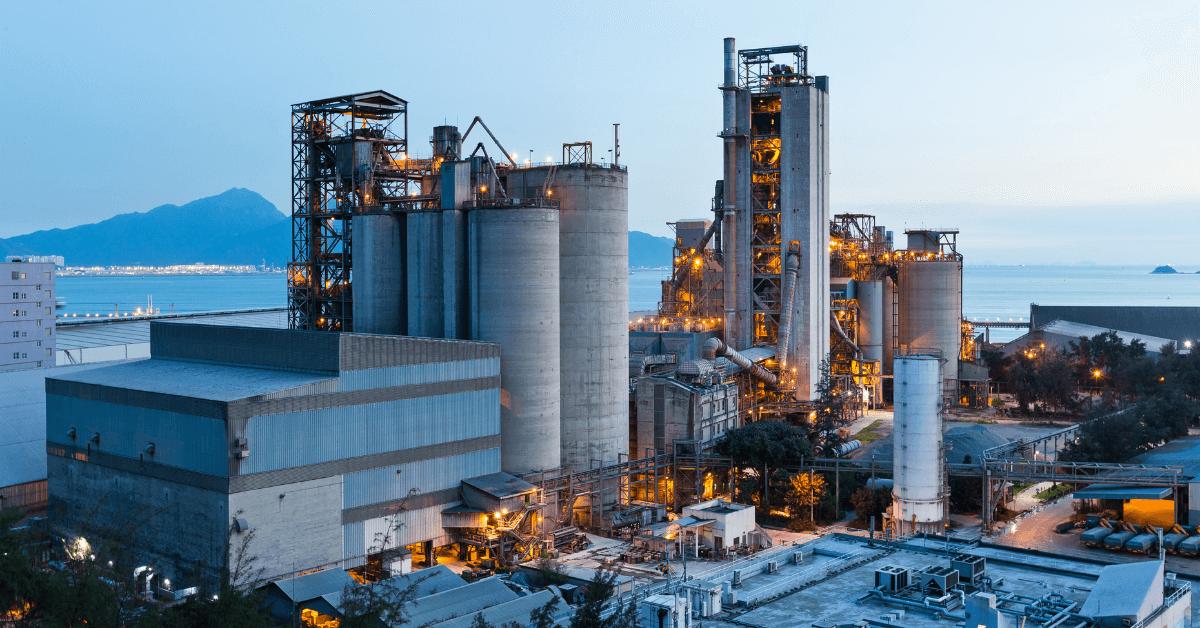September 12, 2022 | Product News
What is SIL?
Safety Integrity Levels, or SIL, are the relative levels of risk-reduction provided by a safety function, or to specify a target level of risk reduction. Simply put – SIL measures the performance necessary for a safety instrumented function (SIF).
What are the 4 Integrity Levels associated with SIL?

What is the IEC 61508?
The IEC 61508 allows for the development of a uniform technical approach that can be applied to all safety systems in electronics and related software. It is a horizontal standard applicable across a wide range of sectors. The standard requires the analysis of the potential risks or hazards of a given system or device.
Why are SIL Certifications Important?
The purpose of the SIL certification is to measure safety system performance and the likelihood of failure. Achieving SIL certification, based on the IEC61508 Functional Safety Standard, signifies that the product has been thoroughly assessed and is a reliable electronic device ready to use across a wide range of industries.
Newly SIL2 Capable: 5580 & SW5580
Metrix recently announced that the 5580 Signal Conditioner and SW5580 Dual Channel Switch has been thoroughly evaluated by an independent third party agency on the basis of IEC61508 Functional Safety standards and is now SIL2 capable.
The assessment covered the areas of systematic capability, hardware safety integrity and random safety integrity.
Why choose the 5580 Signal Conditioner or the SW5580 Switch?
They are a great lower cost alternative to rack mounted monitors. Both are available in a dual channel configuration.
The 5580 and SW5580 are similar, but the SW5580 also includes optional dry or solid-state relay contacts.
They accept signals from machine casing mounted velocity sensors, accelerometers or shaft observing proximity probe systems. Both produces a 4-20 mA output (NAMUR compliant) proportional to the measured variable and an amplified raw signal. They provide a configurable signal input type for one or two independent channels, plus the ability to scale output either to peak or RMS units, and an LED indicates alarm levels
You can operate them in a Dual Path Mode, one sensor in, two channels out. They have rod Drop and impact functionality. Both can be configured in the field to meet application requirements using our free configuration software!
Contact us here for more information!
August 24, 2022 | Product News
Compatible: Connect any sensor to any software system
Cost-Effective: Save time and money with plug-and-play installation
Cybersecure: Encryption, authentication and remote updates
Comprehensive: Encompassing all required equipment and services
Delivering decisions from field assets data
Schneider Electric’s Data Logger LT is a ruggedized, battery-powered, wireless Industrial Internet of Things (IIoT) edge device. Seamlessly combined with powerful software, the Date Logger LT offers continuous monitoring and situational awareness. Our end-to-end solution helps municipal and industrial operators increase efficiency, reduce downtime and failures, and improve compliance.
The Data Logger LT is designed for compatibility and interoperability to connect decision-makers with their critical assets. The device generates and securely transmits sensor data to a software platform, where is can be managed and integrated into third-party applications, such as SCADA, data analytics, and GIS.
Through the creation and management of data from field assets, Schneider Electric’s solution transforms and adds intelligence to new and existing infrastructure networks alike.
July 25, 2022 | Product News
Metrix invented the vibration transmitter in 1983, nobody benefitted more than the centrifugal air compressor industry. Simple, reliable, continuous machinery protection at a fraction of the cost compared to rack-based systems.
This Metrix technology has helped customers avoid false trips by taking advantage of their patented spike suppression innovation. This feature looks at the vibration signal and, if selected, will reject any large amplitude spikes that are greater than the full scale range and shorter than 0.05 seconds in duration. That is because the Digital Proximity System samples at a rate of 18,000 times per second and can actually detect those short duration spikes, unlike analog technology.
These innovations have saved their customers as much as $50K per avoided shutdown.
The Metrix breakthrough technology allows you to to monitor the entire machine with the MX2034 Transmitter – Any probe and cable from any manufacturer, any target material for any proximity measurement.
July 18, 2022 | Product News

Vibration monitoring is a crucial part of any machine’s operating and maintenance program. It can be challenging to understand how well a machine is running by just looking at it or listening to it, but with vibration monitoring, you have the opportunity to see what’s going on inside that unit and make decisions based on the data to keep the machine and the process running.
Vibration monitoring contributes to a company’s bottom line. So, if you’re interested in learning more about how vibration monitoring can elevate your business and the company’s efficiency, then you should know how vital and beneficial it can be.
Here are the top five benefits of machinery vibration monitoring and analysis:
1. It Prevents Costly Downtime
One of the main benefits of machine vibration monitoring is that it can help you prevent costly downtime and keep the process running. By understanding the condition of your machines and catching problems before they turn into failures, you can keep your machines running and save yourself the money that would have been lost had the machines broken down. In addition, this will allow your employees to spend time on more productive tasks.
2. Vibration Monitoring Increases Overall Safety
Another benefit of vibration monitoring is that it can help you increase overall safety. Hazardous conditions can arise when a machine is running roughly. You can take preemptive action to keep your employees safe and out of harm’s way with vibration monitoring. The sooner issues are detected, the more likely it is that they will be easily fixed. In addition, this type of proactive maintenance will save you money in the long run and make your machines safer for everyone who works around them. There is nothing more important than the safety of your employees. Having a reliable choice is being proactive about employee safety and is a huge added benefit to using a robust machinery vibration analysis.
3. It Also Saves Money on Repairs
Vibration monitoring can help you save money on repairs. When an issue is detected early, less work will be needed to correct the problem, and you’ll be less likely to have to replace a machine because of extensive damage. In addition, with vibration monitors, you can be proactive about the condition of your equipment and avoid major production failures.
This will also save you money on the labor required for maintenance on machine repairs. Instead of spending the time and money to fix a machine, you can spend that time and energy on other projects. This boost in efficiency, productivity, and increased savings will have a tremendous impact on your bottom line.
4. Vibration Monitoring Helps You Understand Your Machines
The best benefit of vibration monitoring is that it allows you to understand your machines. By understanding each machine’s normal vibration readings and detecting when something is wrong, you can discover problems and make repairs right away. This understanding will help you keep your machines running longer and more efficiently.
Below are the types of issues that machine vibration analysis can show you:
- Imbalance
- Mechanical looseness
- Bearing failures
- Misalignment
- Bent or bowed shafts
- Electrical faults in motors
- Resonance and natural frequencies (critical speeds)
- Cavitation in pumps
- Gearbox failures
Vibration analysis can give you the information necessary to make decisions about your machines. In addition, the faster issues are detected, the more likely they will be able to be fixed in a timely and effective manner.
5. Vibration Monitoring Means You Can Get Better Performance From Your Machines
Machine vibration monitoring can help you get better performance from your machines. Having data to show when problems are detected makes it easier for you to decide how to improve your machines’ performance.
A vibration switch will help you do this. This protection device senses vibration through its vibration switches and triggers an alarm or shuts the machine down if it reaches a specific threshold. This will help keep your machines running longer and avoid catastrophic shutdowns and machine issues.
You Also Get Comfort and Reassurance
A less tangible but equally important benefit of vibration monitoring is that it provides comfort and reassurance. By understanding the condition of your machines and catching problems before they turn into failures, you’re doing everything possible to ensure that your machines run as safely and efficiently as possible. This can lead to peace of mind and a decreased chance of an unexpected downtime or failure.
Machinery vibration analysis provides you with consistent monitoring of your machine to detect and alert you of issues before they get out of hand. This data is collected and analyzed to provide you with the information needed to keep your machines running smoothly.
Introduce Vibration Monitoring to Your Company
The benefits of vibration monitoring will improve your bottom line, safety, and machine performance. Start learning more today if your company is looking for a way to start with vibration monitoring, and if you think it could benefit your business. Reach out to one of our expert engineers!


